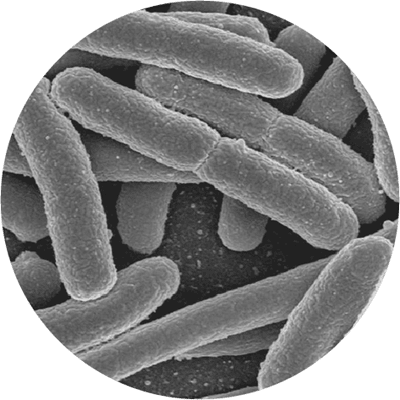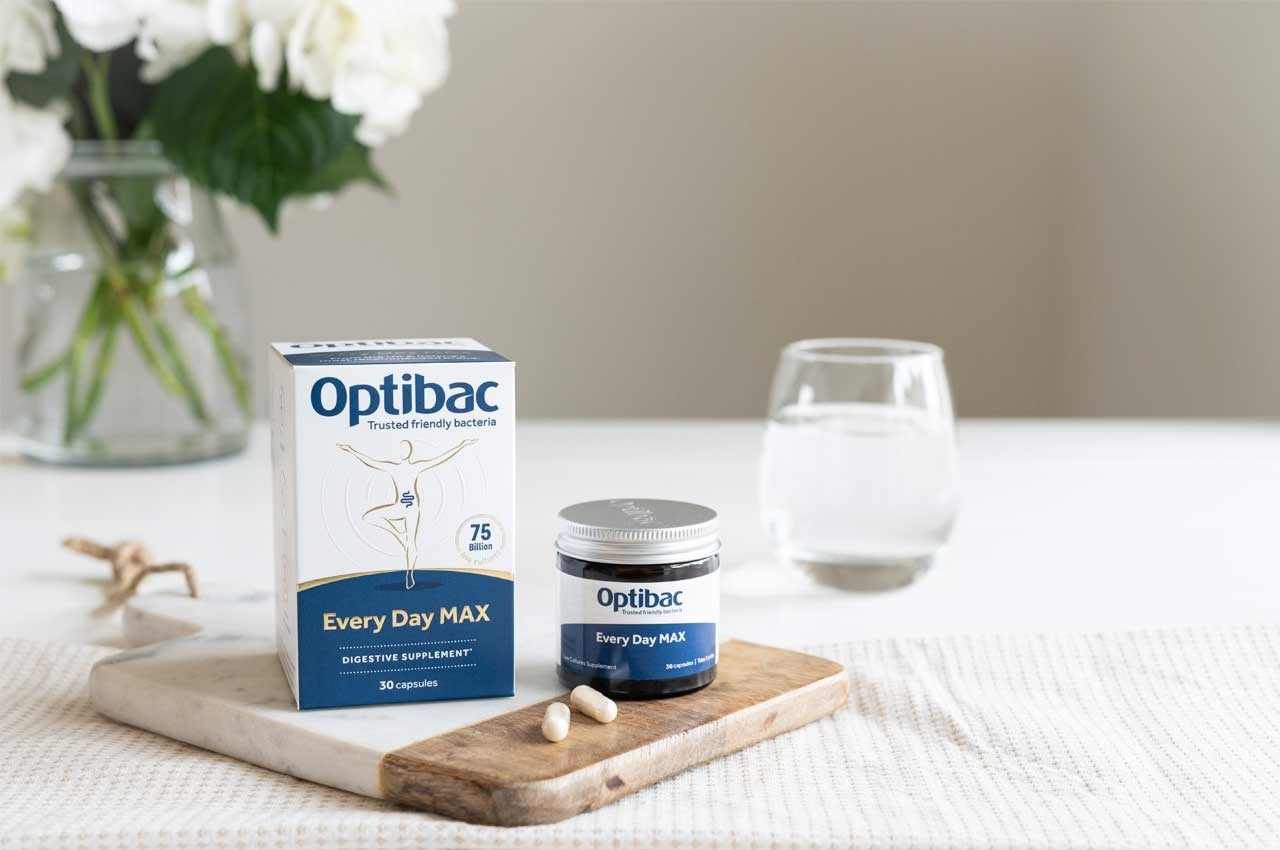- About Us
-
Help
Free 1:1 supplement advice
Not sure which supplement is right for you? Book a free, 15 minute telephone call with one of our nutritional experts.
Book your free consultationGet in touch (Mon to Fri, 9am - 5pm)
Customer Service: +44 (0) 1264 339 770
Order Enquiries: +44 (0) 1264 363 193
Contact us - Stockists
You are on the UK site
Hello US customer, you are currently shopping on the UK site. To ensure you are charged in the correct currency and receive accurate shipping costs, please switch to the US website and re-add your product to your basket.
You're away from FREE UK delivery Free UK delivery (applied at checkout) on orders over £10.00
You have qualified for Free UK delivery
About Live Cultures
What is Acidophilus?
Acidophilus is a species of good bacteria within the Lactobacillus genus. There are many different strains within this species, including Lactobacillus acidophilus NCFM® ,the most researched acidophilus strain in the world. Find out everything you need to know about acidophilus and its benefits in this FAQ.
- Which is the best acidophilus friendly bacteria?
- What is acidophilus used for?
- How much Lactobacillus acidophilus should I take?
- Is it OK to take Lactobacillus acidophilus daily?
- Are there any side effects from taking acidophilus?
- How long does L. acidophilus take to work?
Many people are confused by the difference between 'acidophilus' and friendly bacteria; in fact, many people just ask for an 'acidophilus supplement' when choosing live cultures. But Lactobacillus acidophilus is just one of many different species of good bacteria from the genus Lactobacillus. It is found in the gut, mouth and vagina, as well as in various fermented foods such as yoghurt and sauerkraut.

Which is the best acidophilus friendly bacteria?
In general, it's best to find the right strain to suit you and your own specific health requirements, which can involve some research.
One very important strain from this species is Lactobacillus acidophilus NCFM®, the most extensively researched strain of acidophilus. Lactobacillus acidophilus NCFM® can be found in the following Optibac supplements:
Lactobacillus acidophilus/helveticus Rosell-52 can be found in these acidophilus capsules:
Lactobacillus acidophilus La-05® and Lactobacillus acidophilus La-14® can be found in this Optibac supplement:
Live cultures also come in different formats: you can choose from acidophilus powders, acidophilus tablets, acidophilus capsules and even acidophilus in liquid format. It's best to choose a format which you will find easy to take, as otherwise you might give up taking them. The majority of products on the market are in capsule format, as these are generally found to be easier to swallow than tablets. Acidophilus capsules and powders in sachets tend to have better shelf-stability and lower risk of contamination than loose powders or liquids.
Some manufacturers of live cultures use enterically coated capsules to protect the bacteria from the harsh stomach acid. Optibac use robust strains of friendly bacteria that survive to reach the gut without enteric coating. This means our acidophilus capsules can be opened, and the contents sprinkled on to cool, non-acidic food or drinks, and you can still be sure that the bacteria will survive and you are getting the full dose2. You may like to read the following FAQ: Can I open live cultures capsules?
Highly researched strains such as Lactobacillus acidophilus NCFM®, which can be found in our supplements Every Day EXTRA and Every Day MAX, will satisfy all of the above mentioned product quality criteria2.
Do your homework before buying an L. acidophilus supplement. Choose one containing high quality, well-researched strains which meet your own individual health needs, whilst also satisfying the above quality criteria, and choose a format which you will find easy to take. For more information, read How to Choose the Best Friendly Bacteria Supplements
What is acidophilus used for?
This species is so-called because it is made up of lactic acid-producing bacteria. Due to their versatility and ability to colonise in many areas of the body, they have been researched for numerous different health conditions. But one shared preference for all these strains is to use carbohydrates and sugars such as lactose as a fermentation substrate. This means that they break down and use these sugars as 'food' when they pass through our intestine.
This is why they are often used by those with lactose intolerances1. People with lactose intolerance lack sufficient digestive enzymes to digest lactose (a sugar found in milk and dairy products) but strains of L. acidophilus bacteria can help to break lactose down into a more digestible form as they produce lactic and acetic acids as a by-product of fermentation. These acids lower the pH of the intestines, discouraging the over-growth of bad bacteria, known as pathogens, and encouraging the growth of ‘good’ or ‘friendly’ bacteria in the gut. Consequently one L. acidophilus benefit is in maintaining a healthy balance of gut flora.
What is even more important to understand is that within each species of bacteria, including the L. acidophilus species, there are a large number of specific strains (types), each with unique properties. Strains from the Lactobacillus genus tend to be the most widely used in live cultures supplements due to their versatile nature. But strains within any species of friendly bacteria will have unique properties, so when choosing live cultures supplements it is important to compare them at strain level, as opposed to merely species or genus level. For example, the Lactobacillus acidophilus NCFM® strain has very different characteristics and health benefits to the Lactobacillus acidophilus La-14® strain.

How much Lactobacillus acidophilus should I take?
This question is a little tricky to answer, as different health symptoms may require not only different strains of good bacteria, but potentially different strengths. As a general rule it's best to follow the clinical trial data, and take around the same number of billions that were used in the clinical trials using the strains. Wherever possible Optibac supplements are formulated in this way, using data and dosage information from the most significant clinical trials. But everyone has a unique gut microbiome, and higher or lower strengths suit different people. It is always best to allow a week or two for the microbiome to adjust when you first start to take a new live cultures supplement.
Is it OK to take Lactobacillus acidophilus capsules every day?
This is a common concern, but people have been consuming live cultures daily in a variety of fermented foods and drinks for hundreds of years. In the majority of research studies using live cultures, participants are typically given a daily intake of friendly bacteria3. Some supplements, such as One Week Flat, are designed to be taken as a short course as and when desired, but many people find they get on better when they take a friendly bacteria supplement every day on an ongoing basis. There's no evidence that doing this will cause dependency or 'overdose', and daily consumption of good bacteria is generally considered to be of benefit.
Does acidophilus have any side effects?
In general live cultures, including those from the L.acidophilus species, are considered to be extremely safe4 and have very few side effects. The majority of people do not experience any negative symptoms from taking live cultures supplements. When first taking a new live cultures supplement, some people may initially experience mild digestive symptoms, such as bloating or excess gas. In most cases these symptoms do not last for longer than a few days; they are simply the result of changes in the bacterial populations in the gut. However, if any side effect is troubling you, or lasts for longer than described, stop taking the product and contact our expert nutrition team for advice.
Read our FAQ ‘Do live cultures have side effects?’ to find out more.
How long does L. acidophilus take to work?
This is a question that everyone wants to know the answer to, but frustratingly there is no ‘one size fits all’ answer here either! With everyone’s microbiome being as unique to them as their fingerprint, it is impossible to know for certain how long it will take to feel the benefits of taking these friendly bacteria supplements. For some people acidophilus supplements have an almost instant effect, whereas for others it can take several weeks or more. In general, we advise patience. The benefits are well worth it, and your health will thank you for it in the longer term.
You should now be fully informed, so can go ahead and shop for your ideal acidophilus now!
You may also like to read the following article:
Healthcare practitioners can find out more about Lactobacillus acidophilus on the Probiotics Database, on the Probiotic Professionals site.
Authors: Dr Aisling Dwyer MB BCh BAO (Medicine, Surgery and Obstetrics), MSc (Personalised Nutrition), Dr Kate Steed PhD Food and Microbial Sciences; Gut Microbiology (University of Reading), BSc Medical Microbiology
References:
- Montes, R.G. et al., (1995). ‘Effect of Milks Inoculated with Lactobacillus acidophilus or a Yogurt Starter Culture in Lactose-Maldigesting Children’. Journal of Dairy Science. 78(8): 1657 – 1664.
- Mai, V., et al. (2017) ‘Novel encapsulation improves recovery of probiotic strains in fecal samples of human volunteers’. Appl Microbiol Biotechnol, 101(4):1419-1425.
- Iannitti, T. and Palmieri, B. (2010). Therapeutical use of probiotic formulations in clinical practice. Clinical Nutrition, 29(6): 701-725.
- Morovic, W., et al. (2017) ‘Safety evaluation of HOWARU® Restore (Lactobacillus acidophilus NCFM®, Lactobacillus paracasei Lpc-37, Bifidobacterium animalis subsp. lactis Bl-04 and B. lactis Bi-07) for antibiotic resistance, genomic risk factors, and acute toxicity’. Food Chem Toxicol, 110:316-324.
.png?lang=en-GB)

